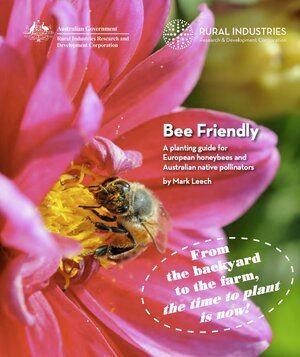 This spiral-bound book is a planting guide for bee forage and describes planting choices “from the backyard to the bush” – and to the farm – and will assist with increasing available bee food.
This spiral-bound book is a planting guide for bee forage and describes planting choices “from the backyard to the bush” – and to the farm – and will assist with increasing available bee food.
It is written at a time when the world has become aware of the plight of the honeybee, and this book has been written in the context of providing guidance for planting decisions in favour of plants that benefit honeybees and native pollinators. That point is made, however, that some plants are listed as weeds should not be planted. Your local nursery can provide you with advice as to whether a plant is a listed weed.
The book covers information relating to urban sites in general, domestic gardens, garden species selection, streetscapes and species, urban open spaces, rural areas and species; in addition, a chapter is devoted to non-migratory beekeeping – the basic backyard beekeeper. Large colour photographs, together with useful information about climatic and soil conditions relating to geographic areas, as well as maps, enhance the overall presentation.
Generally, this guide gives ideas and choices of species to bring about improved outcomes for honeybees and the Australian pollen- and nectar- using fauna, including mammals, insects and birds.
Reviewed by Barbara Horwood
An Australian Government publication –Rural Industries Research and Development Corporation, 2012
A PDF of the entire publication can be downloaded from our gardening page.

